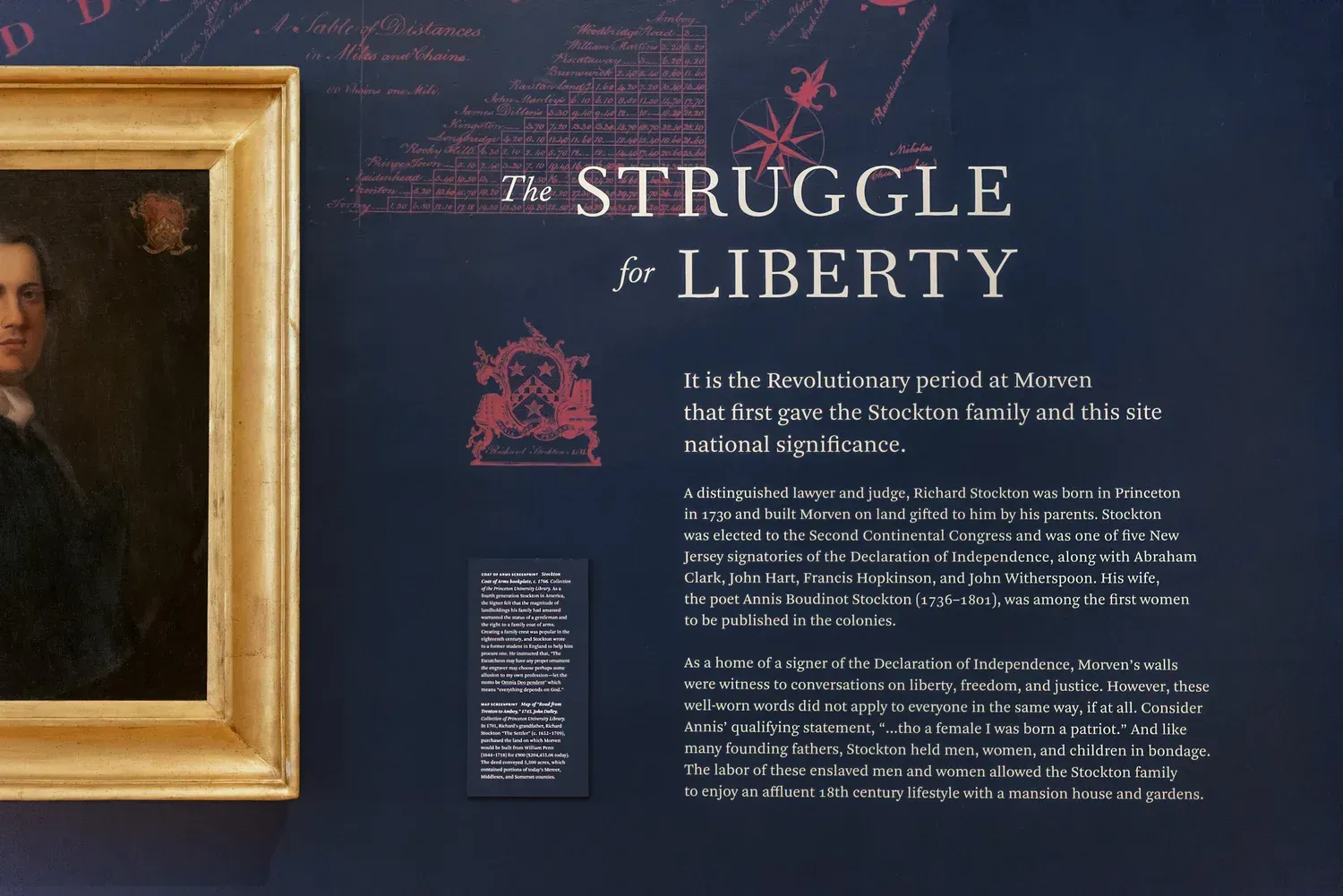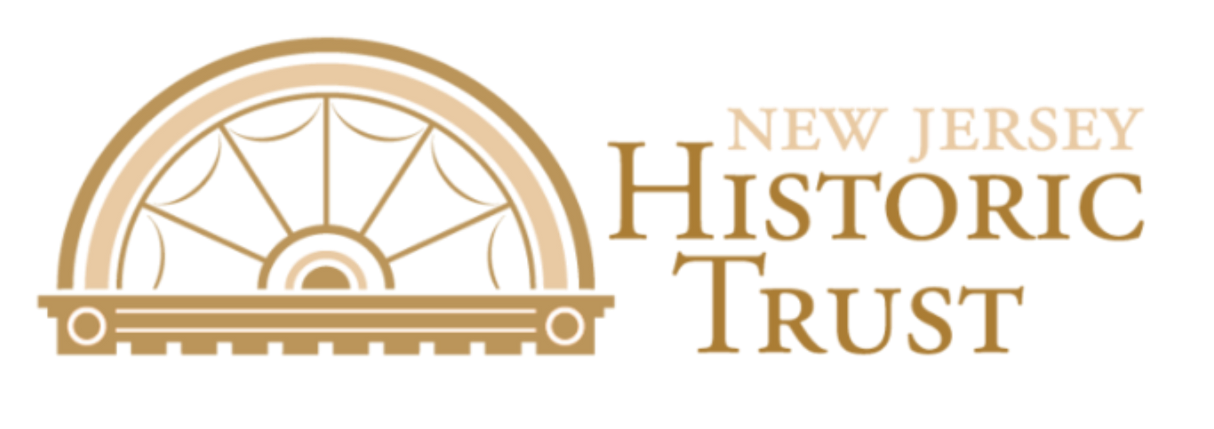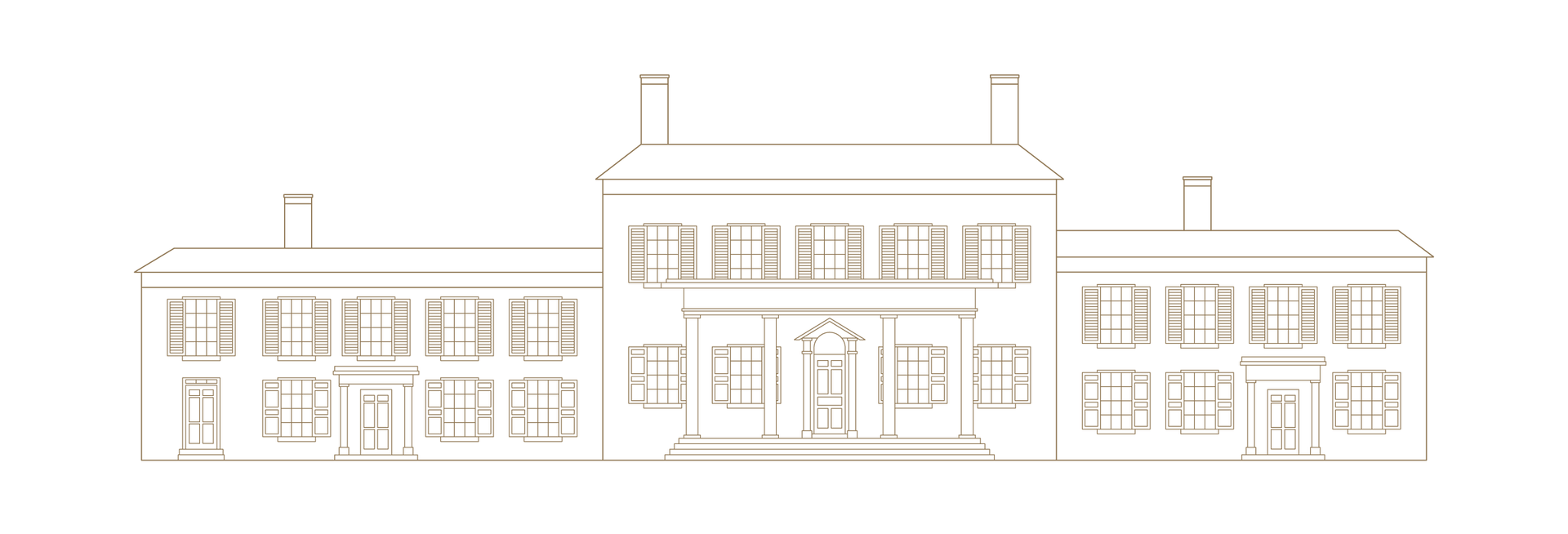Historic Morven: A Window Into America’s Past
Permanently available on the museum's first floor
As home to one of the signers of the Declaration of Independence and five New Jersey governors, Morven has played a role in the history of New Jersey and the nation for more than 200 years.
This exhibition is currently on display; tickets are available to purchase online. Click below to visit our planning resource to make the most of your trip.
A museum since 2004, Morven has, until recently, focused on the better-known patriarchs who led on the national scene. This exhibition expands these stories while adding the voices of the many people who lived and worked at Morven, including women, children, generations of enslaved men and women, immigrant servants, and later, employees.
Morven was built by Richard Stockton (1730–1781), a signer of the Declaration of Independence, in the 1750s on property granted to his grandfather by William Penn (1644–1718) in 1701. Of course, European settlers were not the first to call this land home. Native Americans lived in the Mid-Atlantic region for more than 12,000 years. Archaeology at Morven has uncovered evidence of Lenni-Lenape tool-making on its current five acres.
Morven’s history is America’s history, and we welcome you to experience it through the lens of this National Historic Landmark.
This exhibition is self-guided but Morven is happy to offer docent-led tours on the hour. Please note that during Festival of Trees in December, no formal tours are given, but docents are available to answer questions.
In an 1804 newspaper advertisement, Trenton clock and watchmaker William J. Leslie touted that he was “Not from Paris, London or Boston – But a Native of New-Jersey.” At the time, the state was home to dozens of craftsmen specializing in tall case clocks. Morven’s newest exhibition will examine the work of New Jersey clockmakers as they collaborated with cabinetmakers, ran shops, and formed professional partnerships to create beautiful timekeeping pieces.
Spanning the colonial and post-revolutionary period, clockmakers ran their shops with the assistance of apprentices and often enslaved labor. Some carried on the clockmaking tradition through several generations, often working multiple trades, including silversmithing.
This exhibition will feature over 50 tall case clocks, representing almost as many different clockmakers, from both private and public collections. These freestanding pendulum clocks are as functional as they are beautiful with faces made of intricate brass work or painted designs of objects like ships, suns, and moons. Internally, their complicated workings are mechanical masterpieces. Some even chime with contemporaneous melodies.
Striking Beauty will be the first large-scale exhibition of its kind, exploring the experiences of the artisans and apprentices, free and enslaved, who contributed to this unique craft. Explore the five-gallery exhibition to see clocks from cities and towns such as Elizabeth, Newark, Burlington, Flemington, and Salem, and more.
Lenders to the exhibition will include: Boxwood Hall, Brown University, Buccleuch Mansion Museum, Burlington County Historical Society, Gloucester County Historical Society, Hunterdon County Historical Society, Monmouth County Historical Association, Trenton Museum Society, as well as loans from numerous private collections.
exhibit support provided by
Robert N. Wilson and Michele Plante
Liza and Schuyler Morehouse
Valerie and Jim McKinney
Ann and Steve West
Ruth and Nick Wilson
Daphne A. Townsend
Jill M. Barry
Carol and Richard Hanson
Eileen and Bob O’Neil
Barbara and J. Richard Pierce
The Thomas and Agnes Carvel Foundation
Holly Pyne Connor & The Helen R. Buck Foundation
Georgia T. Schley
This exhibition was made possible by a grant from the New Jersey Council for the Humanities, a state partner of the National Endowment for the Humanities. Any views, findings, conclusions, or recommendations expressed in this exhibition do not necessarily represent those of the National Endowment for the Humanities or the New Jersey Council for the Humanities.
Morven Museum & Garden received a project grant from the New Jersey Historical Commission, a division of the Department of State.
This project has been funded in part by a grant from the Richard Lounsbery Foundation for Morven’s French-American Connections.
This project has been funded in part by a grant from the William Short Fund for New Jersey of the National Trust for Historic Preservation.
The incorporation of new research into Morven's permanent exhibition in 2025 was made possible, in part, by Fulton Bank and the Mercer County Cultural & Heritage Commission, through funding from the Mercer County Board of Commissioners and the New Jersey Historical Commission.



